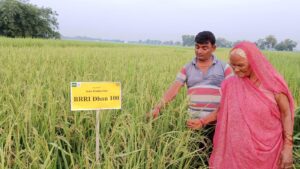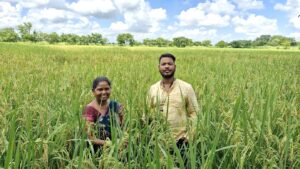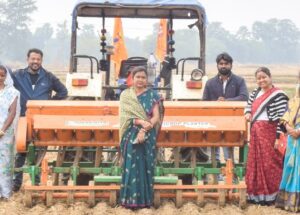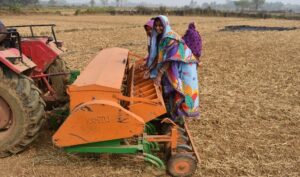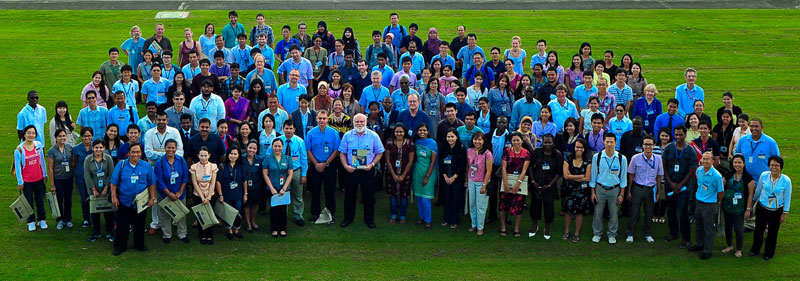
In November 2012, young rice researchers mostly working at IRRI received support in professional development through a milestone event, the 2012 IRRI Young Scientists Conference, or “2012IYSC.”
“For a long time, many young scientists have been looking for a venue to present their work,” said Govinda Rizal, conference chair and president of the Association of Fellows, Scholars, Trainees, and Residents (AFSTRI), which organized the two-day affair.
“For many of the participants, this was their first experience presenting before an audience of international scientists,” he added.
Participants had opportunities to review abstracts, chair sessions, moderate meetings, and interact with scientists and peers across different research themes, while first-time presenters were trained.
Start-up scientists

The conference featured more than 80 abstracts of research activities in the fields of crop improvement; crop protection; extension, marketing, and policies; environment and sustainability; genetics and genomics; and innovations and novel approaches.
“The abstracts represent an excellent range of IRRI’s research,” said IRRI Director General Robert Zeigler. “I was overwhelmed by the breadth and richness of the work.
“Unburdened by managerial responsibilities and ripe with enthusiasm and the latest technologies, time and again, we see our young scientists publishing excellent papers and producing high-quality, even world-class, research,” he added.
Surviving in the science arena
One of the most anticipated events at the 2012IYSC was the Best Paper Competition, in which six young scientists vied for the top honor and prize. This was one of the highlights of the conference.
Tobias Kretzschmar won first place (Gene validation of a major QTL for tolerance of anaerobic conditions during germination), while Genelou Atienza (Ubiquitous resistance to rice tungro spherical virus is mediated by a gene for translation initiation factor 4G) and Taznoore Samine Khanam (Impact of rice price hike on poverty in Bangladesh) placed second and third, respectively.
Citations were also given to Ronald Tapia (Introduction of transport proteins into Oryza sativa L. to facilitate installation of the C4 pathway), Swati Kamal (Transformation of rice with C4 genes and characterization of transgenic plants), and Yam Kanta Gaihre (Methane emission and rice yield as affected by elevated temperature, rice straw incorporation, and soil properties in lowland rice paddy soils).
The participants certainly came away with more than prizes. “IRRI provides me with the opportunity to do fundamental science that is directly applicable to alleviate poverty and ensure food security,” said Mr. Kretzschmar, from Germany. “Not many scientists are that privileged.”
Ms. Atienza said that she gained confidence in her work after presenting her paper at the competition. “I believe our research made a mark on many of the people who attended the conference,” she said. “First, find your passion.” She said it was important for scientists to find their passion. In her case, it is making life better for rice farmers and consumers while protecting the environment.
New revolutionaries
IRRI has a rich history of advancing rice science—from high-yielding varieties to ecological engineering. But, to sustain this momentum of innovations, the Institute must encourage creativity and target newer scientific tools that hold the potential for rich discoveries.
“Having a rich and thriving population of young scientists and what it means to the future of rice production and techniques cannot be overstated,” said Dr. Zeigler. “Without a crop of vibrant, intelligent, dedicated, and caring young scientists, IRRI would not have a future. Indeed, the future of rice research and the progression of rice farmers and consumers out of poverty would also be threatened. That’s a tremendous responsibility for IRRI to maintain that flow of community.”
Through the 2012IYSC, IRRI aimed to bring new talent and modern training together to start more revolutions.
Achim Dobermann, IRRI’s deputy director general for research, strongly agrees with the strategic importance of recruiting young, talented people to rice science and nurturing them.
“A remarkable influx of new brains, new skills, and new energy is what we need if we want to succeed in what we’re doing. Young scientists must play a leading role in such efforts and thus help in shaping a new image for modern agriculture,” said Dr. Dobermann. “They have the modern skills and knowledge that will be required to tackle some of the grand challenges in biology and agriculture. I am very excited to see this first young scientists conference happening at IRRI.”
Cross-fertilization
In the real world, problems seldom come neatly packaged for one discipline to study. Solving a single problem often requires collaborative efforts of different experts.
The 2012IYSC is an effort to improve communication and collaboration between disciplines and create more effective partnerships and more integrated rice science.
“It is always a big concern for me when they do not have enough time to interact with each other and spend most of their time slaving away quietly on their own,” Dr. Dobermann revealed. “We need to make sure they become not just specialists or experts in their field but also well-rounded individuals who know about rice, rice science, and many associated things in general.”
Dr. Zeigler also encouraged young scientists to step out of their comfort zones and find out what’s going on outside their research focus.
“Intellectual cross-fertilization is really a very, very important part of the professional development of young scientists,” he said. “When I was a scholar, I spent a lot of time with anthropologists and sociologists even though I was a plant pathologist. That cross-fertilization is extremely important. What we want to do here is foster that.”
IRRI will continue to invest in bringing people from Latin America, Africa, Asia, North America, and Europe together and mixing them up in a rich intellectual event, he vowed.
“We were successful in proving that, given the resources, it is possible to organize an international conference at IRRI,” Dr. Rizal said. “The 2012IYSC is a strong precedent for future conferences at which young scientists can get some time in the spotlight.”
A link between present and future
“This platform will also work as the golden bridge between experienced senior scientists and those following in their footsteps,” Dr. Rizal said. “And, it was an opportunity for IRRI managers to get first-hand knowledge where research activities are strongest and where leverage is needed.”
History tells us that many young people who spend the early part of their career at IRRI go on to achieve other professional successes and continue to contribute to rice science for development in many varied ways, according to Dr. Zeigler. IRRI alumni work all over the world at leading research institutes, heading national agencies, taking senior roles in government and the business sector, and even returning to IRRI.
“While not all of you will remain working on rice, almost all of you will work on some aspect of research that will contribute to helping alleviate poverty around the world,” Dr. Zeigler told conference participants.
Perhaps several years from now, as the current generation of young scientists takes over the helm from their mentors, many will look back at the 2012IYSC and say that this is where it all started.
_________________________________________
Mr. Santiaguel is a writer at IRRI.


